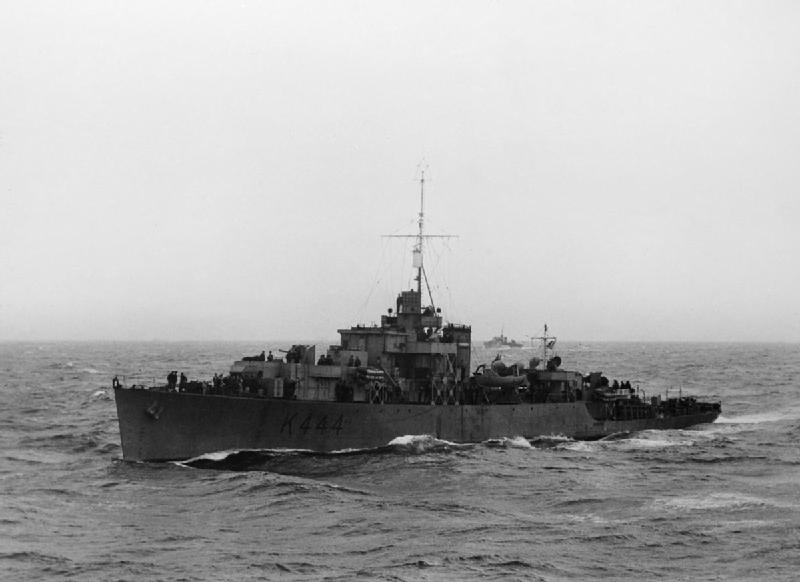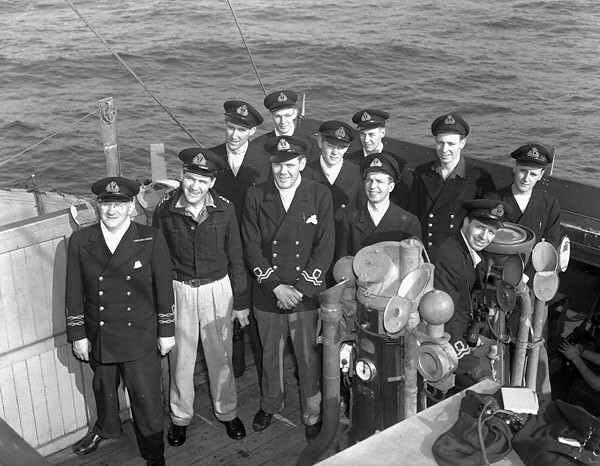
River class frigate HMCS Matane. was a convoy escort in the Battle of the Atlantic. [Wikimedia]
“It was a cracking echo and very soon it became obvious that this really was a U-boat,” wrote Royal Navy Commander A.F.C. Layard, aboard HMCS Matane, the senior officer’s ship, leading HMC ships Swansea and Stormont.
“I went slow, meaning to take my time, but the range closed very rapidly…. Suddenly ahead appeared the swirl of the thing, which must have been very shallow. I was still worried lest I was going to get so close as to lose contact before ready to attack.” The periscope was reported off the bow. “I then got thoroughly rattled and, in case he should fire a torpedo or GNAT [acoustic torpedo], I reckoned I must go for him…. I dropped a pattern by eye, which as it turned out was a good deal too early.”
Swansea attacked with depth charges as well, then ASDIC conditions worsened and they lost the sound of the submarine. “I went through agonies of suspense and worry. What I’ve always dreaded has happened. We find a U-boat and then I make a balls and lose it. It must be admitted the lack of daylight, the bad [ASDIC] conditions and the periscope” contributed to difficulties, “but I feel I’ve let the ship and group down and feel suicidal with shame.”
But the Matane crew did not need to feel ashamed of their service. In June, the frigate took part in the D-Day invasions, and was hit by a bomb from a German plane in July. Three crew were killed and it took eight months to complete repairs.

Officers aboard the frigate HMCS Matane arrive in Halifax in 1944. [LAC/MIKAN 3252443]
After one more escort trip to Gibraltar, Matane sailed back to Canada, and was paid off in February 1946 in Esquimalt, B.C. In 1947, the vessel was stripped and its hulk became part of the breakwater for logging operations at Oyster Bay, between Comox and Campbell River.
In the early 1980s, it was confirmed that Matane and Swansea had in fact sunk U-311.
Advertisement


















